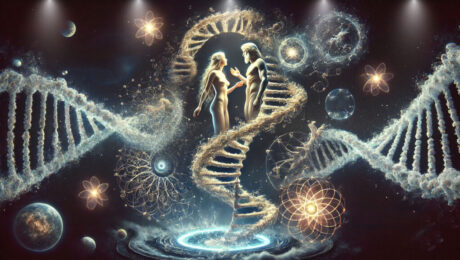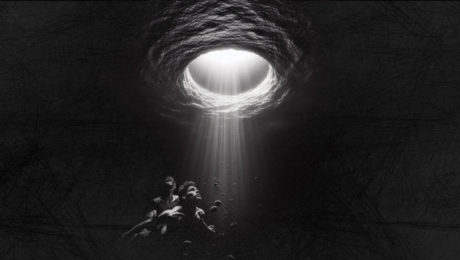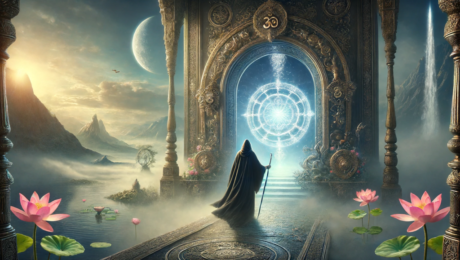SPIRIT INTO MATTER (RNA TO DNA)

In Genesis 2:21-22, the passage describes the creation of woman from a “rib” taken from Adam. This “rib” has often been interpreted symbolically, but if we consider it through the lens of genetics, it opens up intriguing possibilities. Ribonucleic acid (RNA) and deoxyribonucleic acid (DNA) are fundamental molecules in genetics, with RNA often acting as a messenger that carries genetic information for building and replicating life.
[21] So the LORD God caused a deep sleep to fall upon the man, and while he slept took one of his ribs and closed up its place with flesh; [22] and the rib which the LORD God had taken from the man he made into a woman and brought her to the man.
In this metaphorical interpretation, Adam’s rib, or ribonucleic acid (RNA), could represent the initial structure or blueprint of human life. When God creates woman, He takes this “rib” (RNA) and completes a new creation process, one that requires an even more stable, complex molecule—deoxyribonucleic acid (DNA)—to store the genetic instructions. In this view, the transition from RNA to DNA symbolizes a deepening complexity and stability in life, as DNA holds the long-term, hereditary information necessary for sustained, diverse life forms.
This analogy suggests that woman, as described in verse 22, represents not only the emergence of complementary partnership but also the evolutionary leap from single-function, replicative molecules (RNA) to the double-helix structure of DNA, embodying diversity, adaptability, and continuity. The “merging” of RNA into DNA signifies the building of a foundational bond, creating a new life structure that encompasses both the masculine and feminine—a complete and balanced expression of life.
In this interpretation, Adam originally existed in a spiritual space—a realm of pure consciousness and unity, known as Paradise or Eden. In this state, Adam embodied a form of life aligned with divine simplicity, where existence was unbroken, seamless, and free from the duality of the physical world. Here, Adam’s life essence was symbolized as a single strand of RNA—a messenger of divine intent, carrying only the necessary information to sustain his being within this realm of pure spirit.
However, the story takes a transformative turn when Eve eats from the Tree of Knowledge of Good and Evil. This act is not simply about disobedience; it represents a profound shift—a descent from a unified spiritual state into a realm of duality and physical embodiment. In this narrative, Eve’s choice acts as a catalyst for a major transformation. RNA, which was sufficient in Paradise, begins to transform into DNA, representing the movement of spirit into matter. Just as DNA is a double-stranded, stable molecule capable of complex life, this descent marks the shift from a purely spiritual existence into the complexity and multiplicity of the material world.
The transformation from RNA (spirit) to DNA (matter) symbolizes the soul’s journey into the matrix of physical reality, where spiritual essence is encoded within material form. Adam and Eve, once beings of light and simplicity, now take on physical bodies, bound by time, space, and the cycles of birth and death. The single strand of spiritual RNA evolves into the double helix of DNA, entwining both spirit and matter, light and dark, within the fabric of their being.
This “fall” into matter is not merely a punishment but rather a divine intention—a purposeful journey where spirit experiences itself within the confines of the physical, gaining wisdom, growth, and a deeper awareness of duality. The matrix of DNA, with its vast array of information and generational inheritance, serves as the blueprint for humanity’s collective evolution. Adam and Eve, now embedded in the physical world, carry within them the memory of Paradise—a spark of divinity that continues to seek, to remember, and ultimately to return to unity with the Creator.
- Published in Uncategorized
PASSAGE TO…

Down in the deep dark waters, there reaches a point to where there’s no more light.
If you lived in these waters the image, you’ve gazed at the light wondering what it
might offer you — is there something in that light which is why you’re drawn to it?
This image is an amazing illustration outlining our quest for the unknown. At birth,
we’re typically born from the darkness into the light. Coming out of our mother’s womb
where we just spent about nine months in the dark is a huge contrast going to the light.
Yet this is how we’re programmed — coming from the dark and being born into the light.
This image shows how light is an Archetype — it hunts for darkness and those in it. It’s
as if the Light is marketing to the Dark looking to sell it something. And it does. Light sells
Purity, Cleanliness and Holiness. Its position is offering change in a revolutionary way. In the image above, the light above the hole offers a complete Transmutation.
Yet isn’t the darkness offering the same thing?
If you were the observers above the hole looking down into the water, you would have
the same observations. The darkness is like the light, an Archetype which hunts — hunting
for those in the light. The darkness sells seduction, manifestation and safety.
Either way you look at this image, there’s a polarity playing out that’s necessary for
reality to exist in the way we perceive it. Darkness is the absence of light, and light is the
absence of darkness. Blend em’ both together and we have matter, the essence of the
Human Being experience.
- Published in Uncategorized
A World Without Religion and the Concept of Salvation
- Published in Uncategorized
The Antichrist as an Escape from Samsara
- Published in Uncategorized








